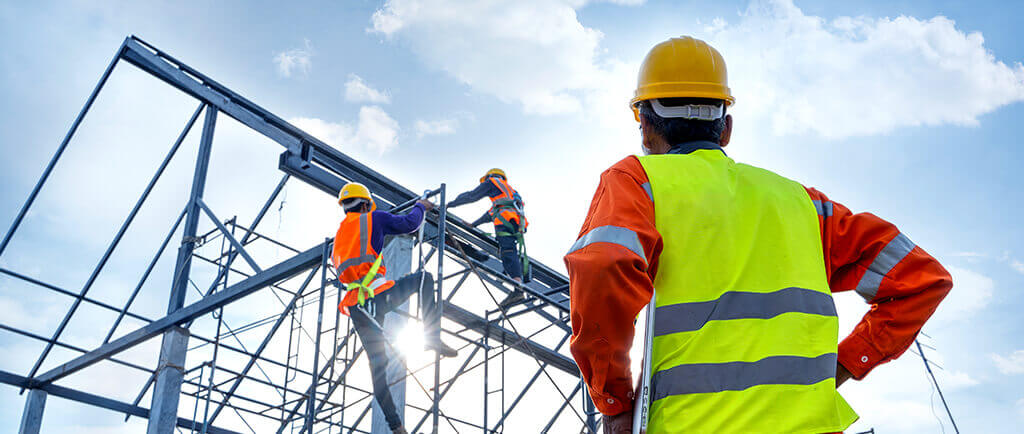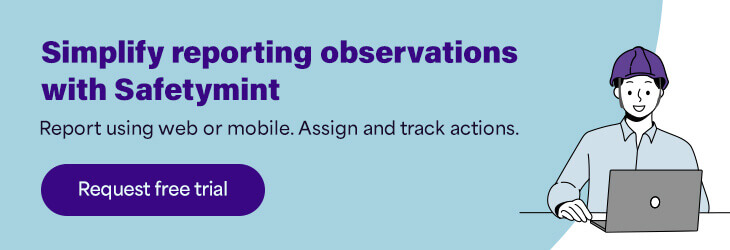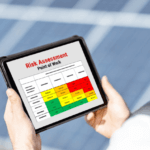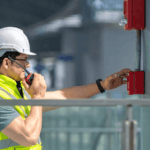
Safety Observation in the Construction industry – Top 10 examples.
Safety is paramount in the construction industry. With the high risks involved in the work, it is essential to take proactive measures to prevent accidents and injuries. Safety observations play a crucial role in identifying potential hazards and ensuring that workers are following proper procedures. In this blog post, we’ll discuss ten examples of safety observations that can help keep construction workers safe on the job.
1. Personal Protective Equipment usage:
Observing workers using appropriate Personal Protective Equipment (PPE), including hard hats, safety goggles, gloves, and safety harnesses.
2. Ladder safety:
Checking if workers are using ladders properly, such as ensuring that the ladder is secured and stable, and that workers are facing the ladder while climbing up or down.

3. Electrical safety:
Observing if workers are following proper procedures when working with electrical equipment or wiring, such as de-energizing equipment before servicing or using insulated tools.
4. Hazard communication:
Observing if workers are aware of the potential hazards associated with the chemicals and materials they are using, and if they are using the appropriate labels and warnings.
5. Fire safety:
Checking if workers are following proper procedures for preventing fires, such as not smoking in hazardous areas, using fire extinguishers, and maintaining a clear path to exits.
6. Excavation safety:
Observing if workers are following safe excavation practices, such as using proper shoring, sloping, or benching techniques, and ensuring that workers are trained on excavation safety.
7. Equipment safety:
Checking if workers are using equipment properly and safely, such as ensuring that guards and safety switches are in place, and that equipment is regularly inspected and maintained.
8. Material handling safety:
Observing if workers are using proper lifting techniques, such as bending their knees and keeping their backs straight, and if they are using appropriate equipment, such as hoists and slings.
9. Fall protection:
Checking if workers are using proper fall protection equipment, such as safety harnesses, guardrails, or safety nets, and if they are following proper procedures for working at heights.
10. Confined space safety:
Observing if workers are following proper procedures for working in confined spaces, such as ensuring proper ventilation, using gas detectors, and having a rescue plan in place.
Managing safety observations in the construction industry can be a daunting task. With so many potential hazards and safety protocols to follow, it can be challenging to keep track of everything manually. Fortunately, technology has made it possible to automate safety management and simplify safety observation and incident management processes.
Safety management software like Safetymint can help construction companies manage safety observations more efficiently. The software can be used to create safety checklists, schedule safety observations, and assign tasks to team members. Safetymint can also track safety observations and provide analytics that can help identify trends and areas for improvement.
Safetymint construction safety management software is also customizable, allowing companies to tailor the software to their specific needs. The software can be used to create customized safety checklists and workflows, as well as customized incident reporting forms.
You can get started with Safetymint with a free trial or a customized demo.

Ramesh Nair is the Founder and Principal Partner of Niyati Technologies, the company behind Safetymint.
He’s a dedicated advocate for workplace safety. Ramesh firmly believes that every individual deserves to return home safely after a day’s work. Safetymint, the innovative safety management software, emerged from this conviction. It’s a platform designed to streamline safety management, empower safety professionals, and enhance safety in workplaces.
Through his blog, Ramesh shares insights, best practices, and innovative solutions for workplace safety. Visit his social media profiles to follow him for regular updates.



